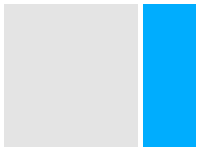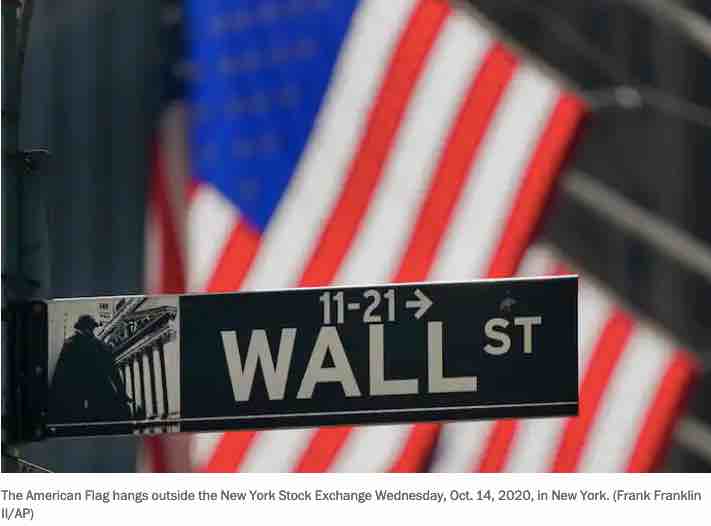Investing is a mystery to many. In theory, the stock market reflects rational calculations as shareholders seek financial returns in companies that perform well. But there are bubbles that overestimate firms’ value and dramatic crashes that suddenly correct the situation. More puzzling, research has long established that many factors beyond economic fundamentals, like holidays and weekends, lunar phases and weather, can affect stock market performance. And stocks can even surge while the economy tanks, as they have during periods of the pandemic. Here are some of the most commonly held myths.
The Top 1% of Americans Have Taken $50 Trillion From the Bottom 90%—And That’s Made the U.S. Less Secure
Even inequality is meted out unequally. Low-wage workers and their families, disproportionately people of color, suffer from far higher rates of asthma, hypertension, diabetes, and other COVID-19 comorbidities; yet they are also far less likely to have health insurance, and far more likely to work in “essential” industries with the highest rates of coronavirus exposure and transmission. It is no surprise then, according to the CDC, that COVID-19 inflicts “a disproportionate burden of illness and death among racial and ethnic minority groups.” But imagine how much safer, healthier, and empowered all American workers might be if that $50 trillion had been paid out in wages instead of being funneled into corporate profits and the offshore accounts of the super-rich. Imagine how much richer and more resilient the American people would be. Imagine how many more lives would have been saved had our people been more resilient.
It is easy to see how such a deadly virus, and the draconian measures required to contain it, might spark an economic depression. But look straight into the eyes of the elephant in the room, and it is impossible to deny the many ways in which our extreme inequality—an exceptionally American affliction—has made the virus more deadly and its economic consequences more dire than in any other advanced nation. Why is our death toll so high and our unemployment rate so staggeringly off the charts? Why was our nation so unprepared, and our economy so fragile? Why have we lacked the stamina and the will to contain the virus like most other advanced nations? The reason is staring us in the face: a stampede of rising inequality that has been trampling the lives and livelihoods of the vast majority of Americans, year after year after year.
Add New Post Preview(opens in a new tab)Add titleFive myths about shareholders
Investing is a mystery to many. In theory, the stock market reflects rational calculations as shareholders seek financial returns in companies that perform well. But there are bubbles that overestimate firms’ value and dramatic crashes that suddenly correct the situation. More puzzling, research has long established that many factors beyond economic fundamentals, like holidays and weekends, lunar phases and weather, can affect stock market performance. And stocks can even surge while the economy tanks, as they have during periods of the pandemic. Here are some of the most commonly held myths.
The Top 1% of Americans Have Taken $50 Trillion From the Bottom 90%—And That’s Made the U.S. Less Secure
Even inequality is meted out unequally. Low-wage workers and their families, disproportionately people of color, suffer from far higher rates of asthma, hypertension, diabetes, and other COVID-19 comorbidities; yet they are also far less likely to have health insurance, and far more likely to work in “essential” industries with the highest rates of coronavirus exposure and transmission. It is no surprise then, according to the CDC, that COVID-19 inflicts “a disproportionate burden of illness and death among racial and ethnic minority groups.” But imagine how much safer, healthier, and empowered all American workers might be if that $50 trillion had been paid out in wages instead of being funneled into corporate profits and the offshore accounts of the super-rich. Imagine how much richer and more resilient the American people would be. Imagine how many more lives would have been saved had our people been more resilient.
It is easy to see how such a deadly virus, and the draconian measures required to contain it, might spark an economic depression. But look straight into the eyes of the elephant in the room, and it is impossible to deny the many ways in which our extreme inequality—an exceptionally American affliction—has made the virus more deadly and its economic consequences more dire than in any other advanced nation. Why is our death toll so high and our unemployment rate so staggeringly off the charts? Why was our nation so unprepared, and our economy so fragile? Why have we lacked the stamina and the will to contain the virus like most other advanced nations? The reason is staring us in the face: a stampede of rising inequality that has been trampling the lives and livelihoods of the vast majority of Americans, year after year after year.
Of course, America’s chronic case of extreme inequality is old news. Many other studies have documented this trend, chronicled its impact, and analyzed its causes. But where others have painted the picture in terms of aggregate shares of GDP, productivity growth, or other cold, hard statistics, the RAND report brings the inequality price tag directly home by denominating it in dollars—not just the aggregate $50 trillion figure, but in granular demographic detail. For example, are you a typical Black man earning $35,000 a year? You are being paid at least $26,000 a year less than you would have had income distributions held constant. Are you a college-educated, prime-aged, full-time worker earning $72,000? Depending on the inflation index used (PCE or CPI, respectively), rising inequality is costing you between $48,000 and $63,000 a year. But whatever your race, gender, educational attainment, urbanicity, or income, the data show, if you earn below the 90th percentile, the relentlessly upward redistribution of income since 1975 is coming out of your pocket.
Read full article
Trends in Income From 1975 to 2018
Custom Description Image Banner (for standard post only) Show Banner Caption Layout




Custom Sidebar Enable Breadcrumbs Show Social Share Icons Show Author Avatar In Share Bar Show Author Box Show Next/Previous Posts Nav Show Related Posts Boxed Layout Container Borders Hide Sidebar Borders Sticky Main Menu
OnLoad Settings
| Popup or A/B Campaign: | For desktops: |
|---|
For mobile devices:
Select popup to be displayed on page load. | |
| Display mode: | Disable popup Every time Once per session Once per days Only once Default Mode (taken from Settings page) Select the popup display mode. |
|---|---|
| Start delay: | seconds Popup appears with this delay after page loaded. Set “0” for immediate start. Value is ignored for “Default” popup. |
| Autoclose delay: | seconds Popup is automatically closed after this period of time. Set “0”, if you do not need autoclosing. Value is ignored for “Default” popup. |
OnScroll Settings
| Popup or A/B Campaign: | For desktops: |
|---|
For mobile devices:
Select the popup to be displayed on scrolling the page. | |
| Display mode: | Disable popup Every time Once per session Once per days Only once Default Mode (taken from Settings page) Select the popup display mode. |
|---|---|
| Scrolling offset: |
Popup appears when user scroll down to this number of pixels or percents. |
OnExit Settings
| Popup or A/B Campaign: | For desktops: |
|---|
For mobile devices:
Select the popup to be displayed on exit intent. | |
| Display mode: | Disable popup Every time Once per session Once per days Only once Default Mode (taken from Settings page) Select the popup display mode. |
|---|
OnInactivity Settings
| Popup or A/B Campaign: | For desktops: |
|---|
For mobile devices:
Select the popup to be displayed on user inactivity. | |
| Display mode: | Disable popup Every time Once per session Once per days Only once Default Mode (taken from Settings page) Select the popup display mode. |
|---|---|
| Period of inactivity: | seconds The popup appears after this period of inactivity. |
OnAdBlockDetected Settings Beta
| Popup or A/B Campaign: | For desktops: |
|---|
For mobile devices:
Select the popup to be displayed AdBlock detected. | |
| Display mode: | Disable popup Every time Once per session Once per days Only once Default Mode (taken from Settings page) Select the popup display mode. |
|---|
VisibilityPublishPost FormatStick to the top of the blogAuthor2 RevisionsSearch CategoriesEconomyBannon WatchBudgetColumnistsDavid BrooksNew York Times EditorialPaul KrugmanThe UpshotThomas FriedmanConflict of InterestDo TodayEducationEnvironmentFacebookFCC and InternetFOREIGN RELATIONSFun and LearningBooksMovies and VideosPodcastsGoverning and the CabinetHealthcareHow We BehaveIMMIGRATION — articles onlyJudiciary and CourtsKansasLABOR — articles onlyMediaMilitary and WarMisleading InformationNATIONAL SECURITY — articles onlyOregonRUSSIA — articles onlySOCIAL JUSTICE — articles onlySocial Security and RetirementMedicareStatesSuccess StoriesTake ActionTaxesToday’s ActionUncategorizedVenezuelaViolence and HateAnti SemitismLGBTRacismReligious IntolernaceXenophobiaVotingWhite NationalismWOMEN’S ISSUES — articles only
Of course, America’s chronic case of extreme inequality is old news. Many other studies have documented this trend, chronicled its impact, and analyzed its causes. But where others have painted the picture in terms of aggregate shares of GDP, productivity growth, or other cold, hard statistics, the RAND report brings the inequality price tag directly home by denominating it in dollars—not just the aggregate $50 trillion figure, but in granular demographic detail. For example, are you a typical Black man earning $35,000 a year? You are being paid at least $26,000 a year less than you would have had income distributions held constant. Are you a college-educated, prime-aged, full-time worker earning $72,000? Depending on the inflation index used (PCE or CPI, respectively), rising inequality is costing you between $48,000 and $63,000 a year. But whatever your race, gender, educational attainment, urbanicity, or income, the data show, if you earn below the 90th percentile, the relentlessly upward redistribution of income since 1975 is coming out of your pocket.
Read full article




